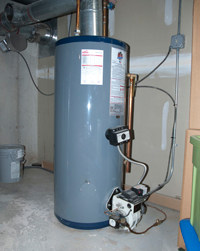Key Care Strategies for Your Home's Hot Water System
Key Care Strategies for Your Home's Hot Water System
Blog Article
What're your concepts on Tips on Maintaining a Water Heater?

Hot water is crucial for daily convenience, whether it's for a rejuvenating shower or washing dishes. To guarantee your warm water system runs effectively and lasts much longer, regular maintenance is key. This post offers useful ideas and understandings on exactly how to preserve your home's warm water system to avoid disruptions and costly repair work.
Intro
Preserving your home's hot water system may seem overwhelming, however with a few basic actions, you can ensure it operates smoothly for many years to find. This guide covers everything from recognizing your hot water system to DIY upkeep suggestions and understanding when to call specialist help.
Value of Keeping Your Warm Water System
Regular upkeep not just expands the life expectancy of your hot water system but also ensures it operates successfully. Neglecting upkeep can result in lowered performance, higher energy bills, and even early failing of the system.
Indicators Your Warm Water System Needs Maintenance
Understanding when your hot water system needs interest can stop significant concerns. Watch out for indications such as irregular water temperature, odd noises from the heating unit, or rusty water.
Purging the Hot Water Heater
Flushing your hot water heater removes sediment buildup, enhancing efficiency and extending its life.
Checking and Replacing Anode Rods
Anode poles avoid rust inside the storage tank. Examining and changing them when worn is vital.
Facility Problems Calling For Professional Aid
Instances include significant leaks, electric troubles, or if your hot water heater is continually underperforming.
Routine Professional Upkeep Conveniences
Specialist maintenance can include complete examinations, tune-ups, and ensuring compliance with safety and security criteria.
Checking and Changing Temperature Setups
Readjusting the temperature setups makes certain optimum efficiency and safety and security.
DIY Tips for Upkeep
You can carry out a number of upkeep jobs on your own to maintain your hot water system in top condition.
Looking for Leaks
Frequently inspect pipelines and connections for leakages, as these can result in water damage and higher expenses.
Recognizing Your Hot Water System
Prior to diving right into maintenance jobs, it's practical to comprehend the basic parts of your warm water system. Generally, this includes the water heater itself, pipelines, anode poles, and temperature level controls.
Month-to-month Maintenance Tasks
Regular regular monthly checks can assist catch small problems before they rise.
Evaluating Pressure Relief Valves
Testing the stress relief valve ensures it operates properly and protects against extreme stress accumulation.
Protecting Pipelines
Shielding hot water pipes decreases warmth loss and can save power.
When to Call a Specialist
While DIY upkeep is beneficial, some issues call for professional expertise.
Conclusion
Routine upkeep of your home's warm water system is important for effectiveness, longevity, and price financial savings. By following these suggestions and knowing when to look for specialist aid, you can guarantee a reputable supply of hot water without unforeseen disturbances.
How to Maintain an Instant Hot Water Heater
Before tinkering with your hot water heater, make sure that it’s not powered on. You also have to turn off the main circuit breaker and shut off the main gas line to prevent accidents. Also turn off the water valves connected to your unit to prevent water from flowing into and out of the appliance. 2. When you’re done, you have to detach the purge valves’ caps. These look like the letter “T†and are situated on either side of the water valves. Doing so will release any pressure that has accumulated inside the valves while at the same time avoid hot water from shooting out and burning your skin. 3. When the purge valves’ caps are removed, you have to connect your hosing lines to the valves. Your unit should have come with three hoses but if it didn’t, you can purchase these things from any hardware or home repair shops. You can also get them from retail stores that sell water heating systems. Read the user’s manual and follow it to complete this task properly. When the hosing lines are connected, open the purge port’s valves. 4. You should never use harsh chemical cleaners or solutions when cleaning your unit. Make use of white vinegar instead. It should be undiluted and you’ll probably use about 2 gallons. 5. Now flush your water heater. This task should probably take about 40 minutes. We can’t give you specific directions for this because the procedure is carried out depending on the type, model and brand of your heater. With that being said, refer to the user’s manual. 6. When you’re done draining the unit, you have to turn off the purge port valves again. Remove the hosing lines that you earlier installed on each of the water valves. Put the valve caps (purge port) back in their respective places and be very careful so as not to damage the rubber discs that are found inside these caps. 7. Now that everything’s back in place, check your user’s manual again to find out how to reactivate your water heating system. 8. Once it is working, turn one of your hot water faucets on just to let air pass through the heater’s water supply pipes. Leave the tap on until water flows smoothly out of it. https://www.orrplumbing.com/blog/2014/september/how-to-maintain-an-instant-hot-water-heater/

We were made aware of that article on Tips on Maintaining a Water Heater from someone on a different website. Are you aware of another person who is excited by the subject? Take a moment to share it. Thanks a lot for going through it.
Learn More Report this page